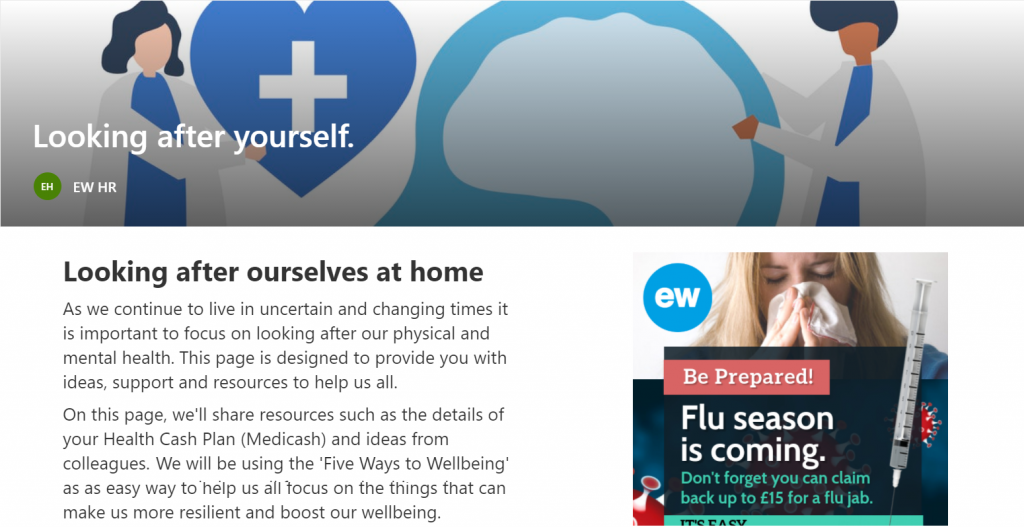Our People Engagement Team share how we at EW have been prioritising wellbeing during the pandemic
Mental health has been key focus for us at Ellis Whittam throughout the coronavirus pandemic, as along with so many other firms, we are now largely all based at home.
Our approach has been one that has aimed to be as pragmatic as possible, recognising the challenges that we all face when blending home and work in one environment.
At times like these, many of us found that our own needs had been brought right ‘back to basics’ and we’ve certainly tried to use this as a guide to prioritise our own business-wide actions.
The question “Do I feel safe?” is at the foundation of a lot of anxiety right now, and as a result many of our actions have been about ensuring all our colleagues have what they need at home, not just in a practical sense, but that they also know how to access emotional support and ensure regular connection to others. Our managers have been key in this and their openness and supportiveness of their teams has really shone through.
We’ve tried to reinforce existing feedback mechanisms via line managers, with back-up from the HR Team internally for people to reach out for help and, alongside our existing Mental Health First Aiders, we are running additional training in mental health to develop managers’ awareness, confidence and skills.
Our regular COVID-19 business updates have always focused on putting our people first too. This means that alongside commercial news, we place a priority on acknowledging the emotional impact of the virus on us all. We try to write them as personally as possible and many of us have shared our own stories of our lockdown challenges.
We were fortunate enough to have a fantastic Health Cash Plan already in place before COVID-19 came along, but during the pandemic, this has certainly taken centre-stage to ensure colleagues feel supported. This means everyone within EW has access to an Employee Assistance Programme, with confidential support available 24/7, as well as an online counselling app, virtual doctor, online courses and ‘money-off’ schemes.

Early on, we also introduced the ‘Five Ways to Wellbeing’ model, developed by New Economics Foundation in the UK, as a way to direct colleagues to practical things to do to support their mental wellbeing. The model details a set of evidence-based mental health messages aimed at improving the mental health and wellbeing of the whole population and suggests that to maintain positive mental health we all need to connect to others, take notice, be active, seek to learn new things and give to others.
Whilst this was great as a message, we’ve tried to make this tangible through sharing tips with each other on our intranet on homeworking and coping in lockdown. We also recently led a walking challenge across the business, aligned to the “get active” and “connect” part of the Five Ways to Wellbeing.
This certainly brought out our competitive nature and made sure we got in the recommended 10,000 steps each day as we set up teams that competed in a race to John o’ Groats from Land’s End – all virtually of course – counting steps on our pedometers. With 42 of us competing in teams of six, it gave us all a shared focus outside of our home offices, and our weekly blog kept non-walking colleagues up to date on our virtual progress up through the UK.

We are consistently monitoring the success of all our activities and we’re not standing still. We have many feedback loops in place to consistently understand where there’s room for improvement. Directors, Senior Leaders and our Social Team all have a role in this and every colleague has a part to play in looking out for each other, whether making the time to catch up over Teams or picking up the phone to connect with colleagues, which is something we actively encourage.
Of course, this is an ongoing challenge amongst many other challenges facing UK businesses right now, and clearly this type of work is something where we can never tick all the boxes all the time. Regular check-ins are important so that we can compare anecdotal evidence with statistics to get a realistic picture of where we need to focus.
